Year 9 Fractions Worksheets
Add and Subtract Fractions and Decimals
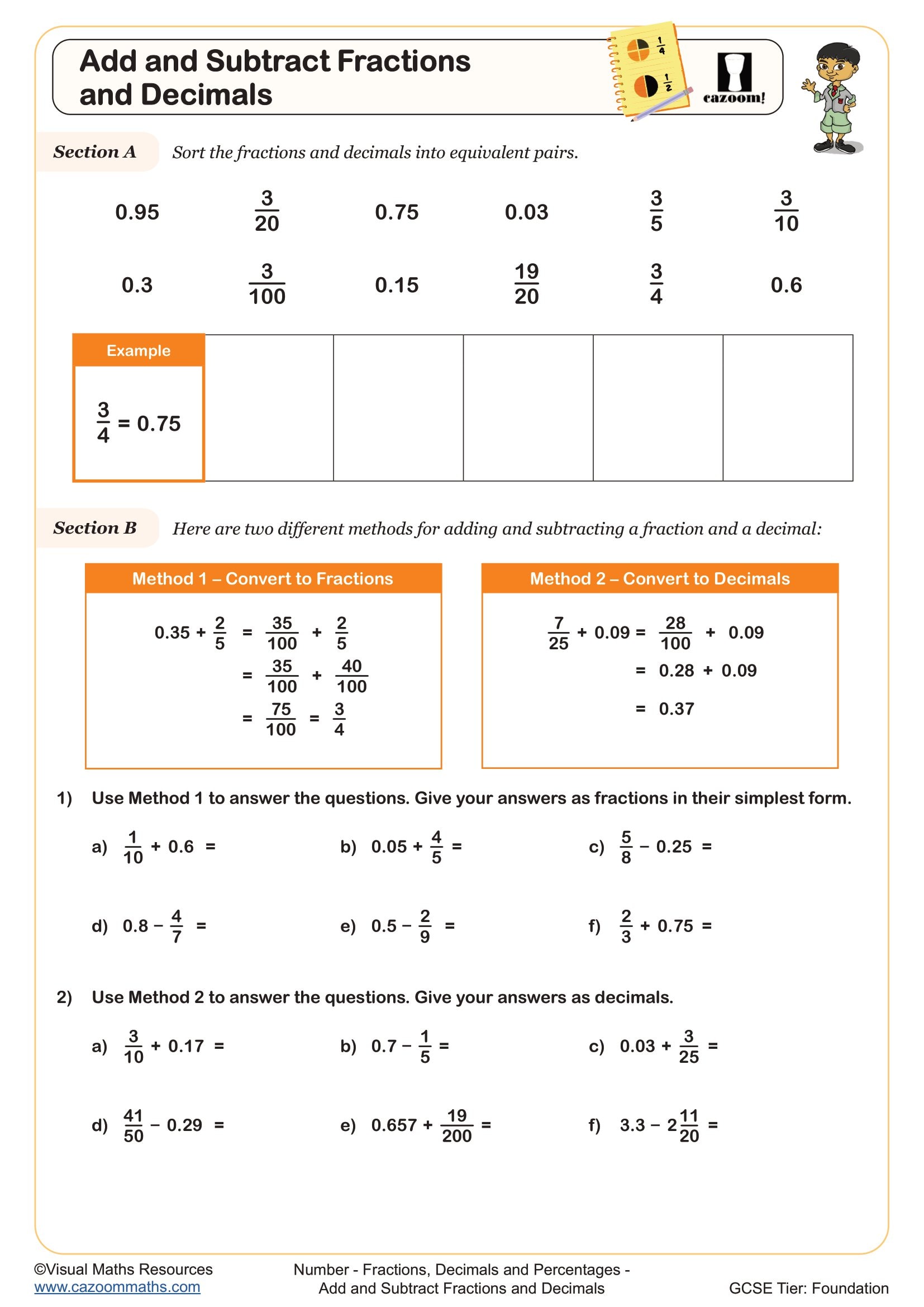
Add and Subtract Mixed Numbers

Adding and Subtracting Fractions
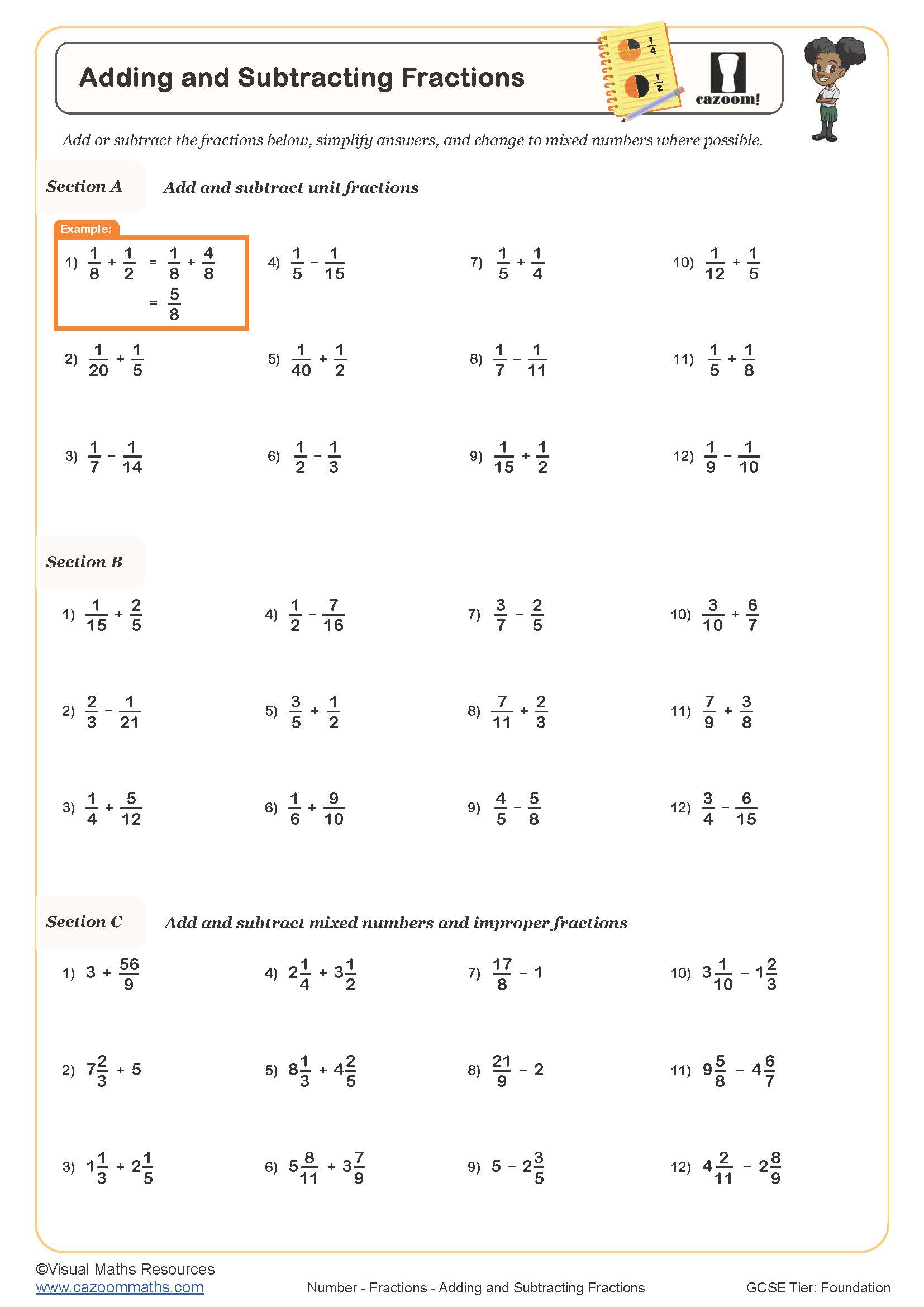
Fraction - Increase and Decrease
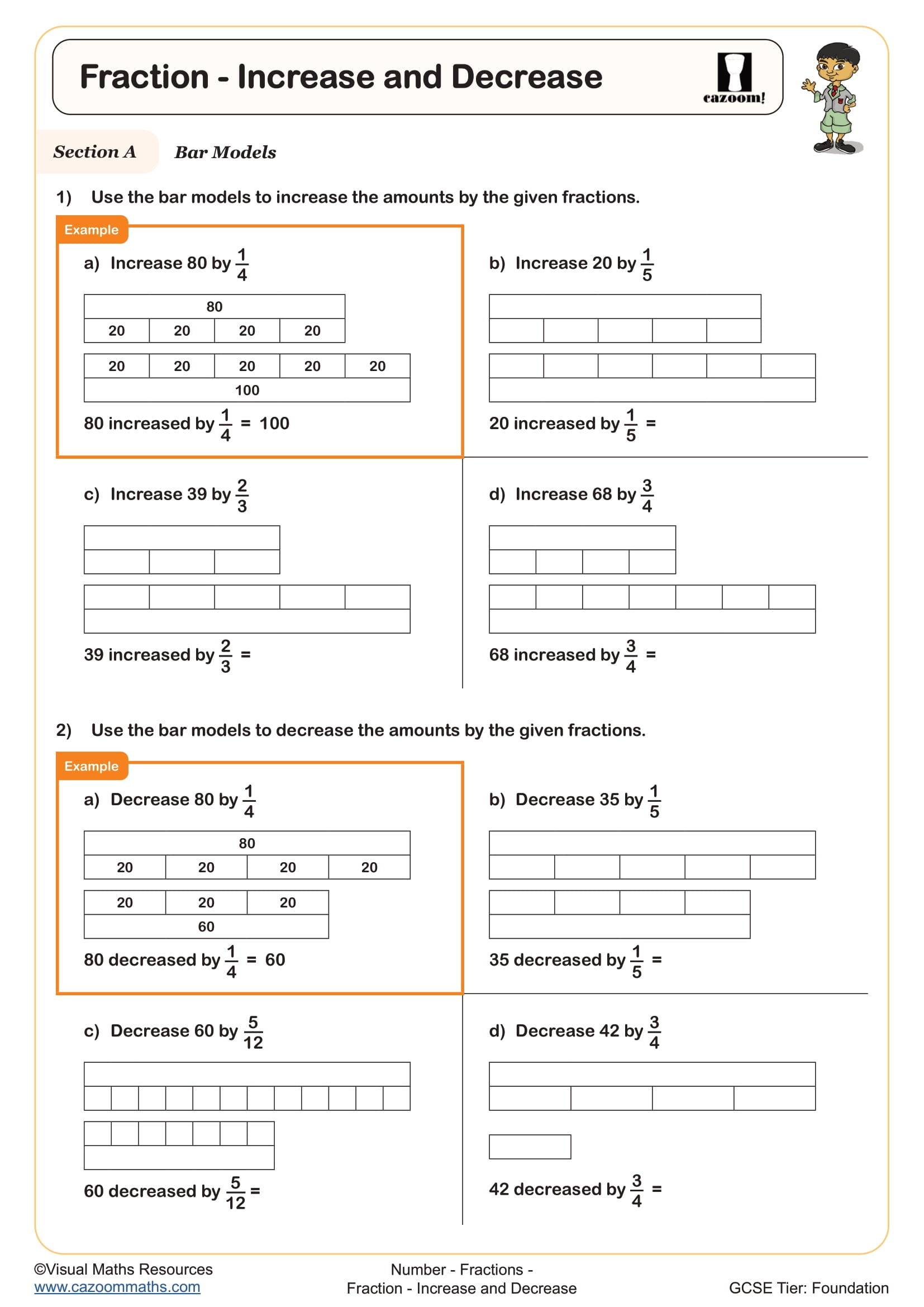
Fraction Problem Solving (B)
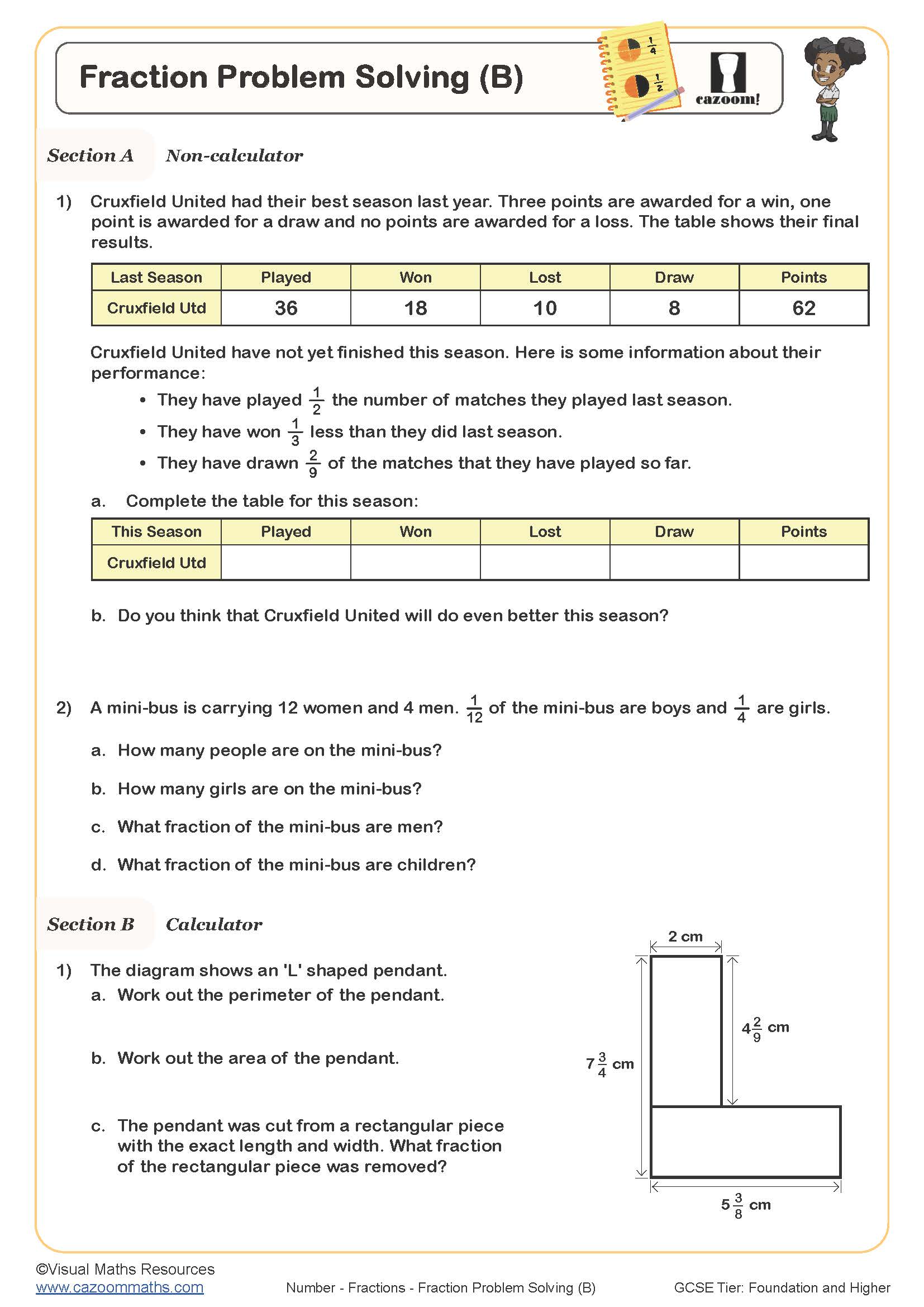
Fraction, Percentage and Ratio Problems
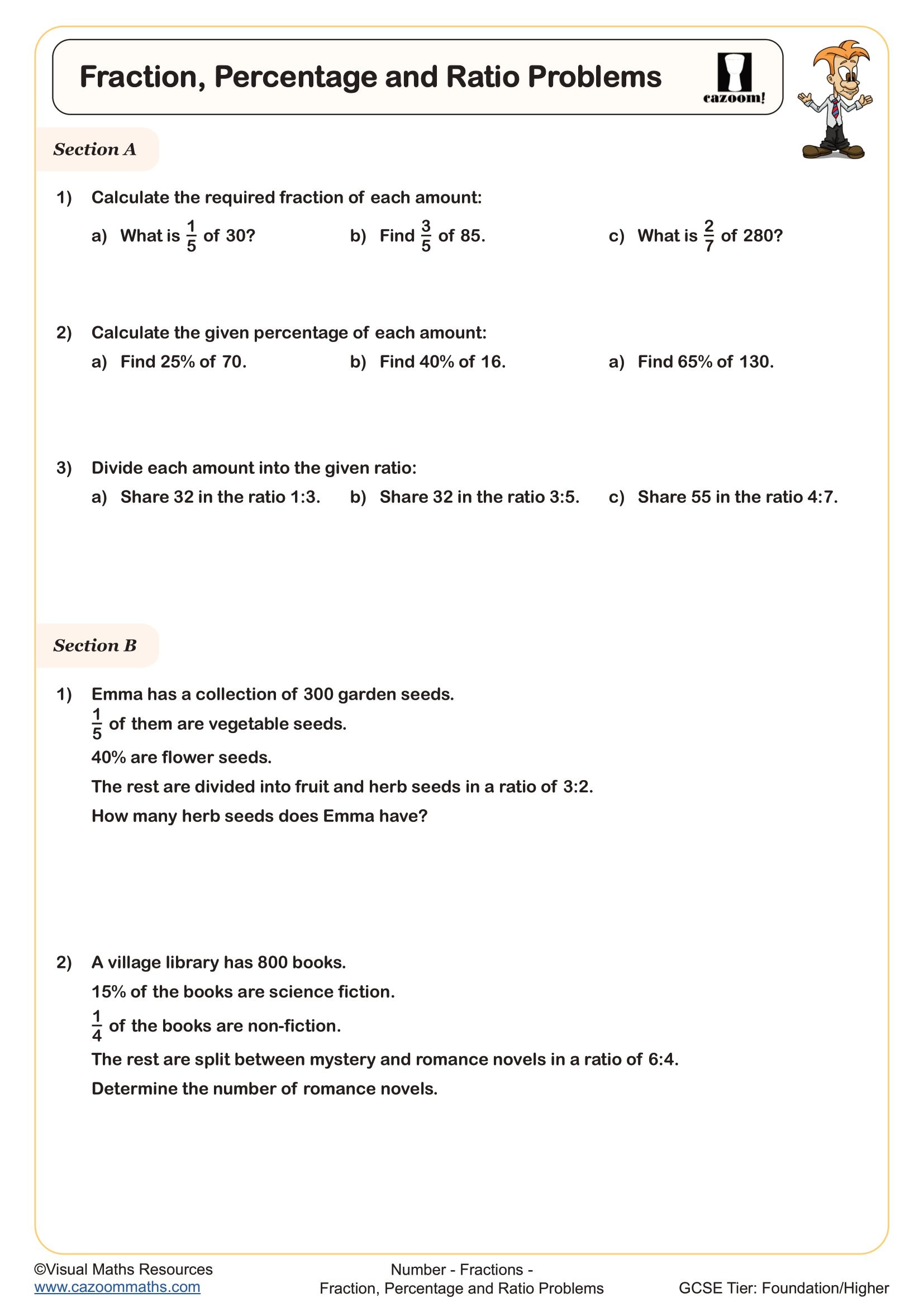
Multiply Mixed Numbers
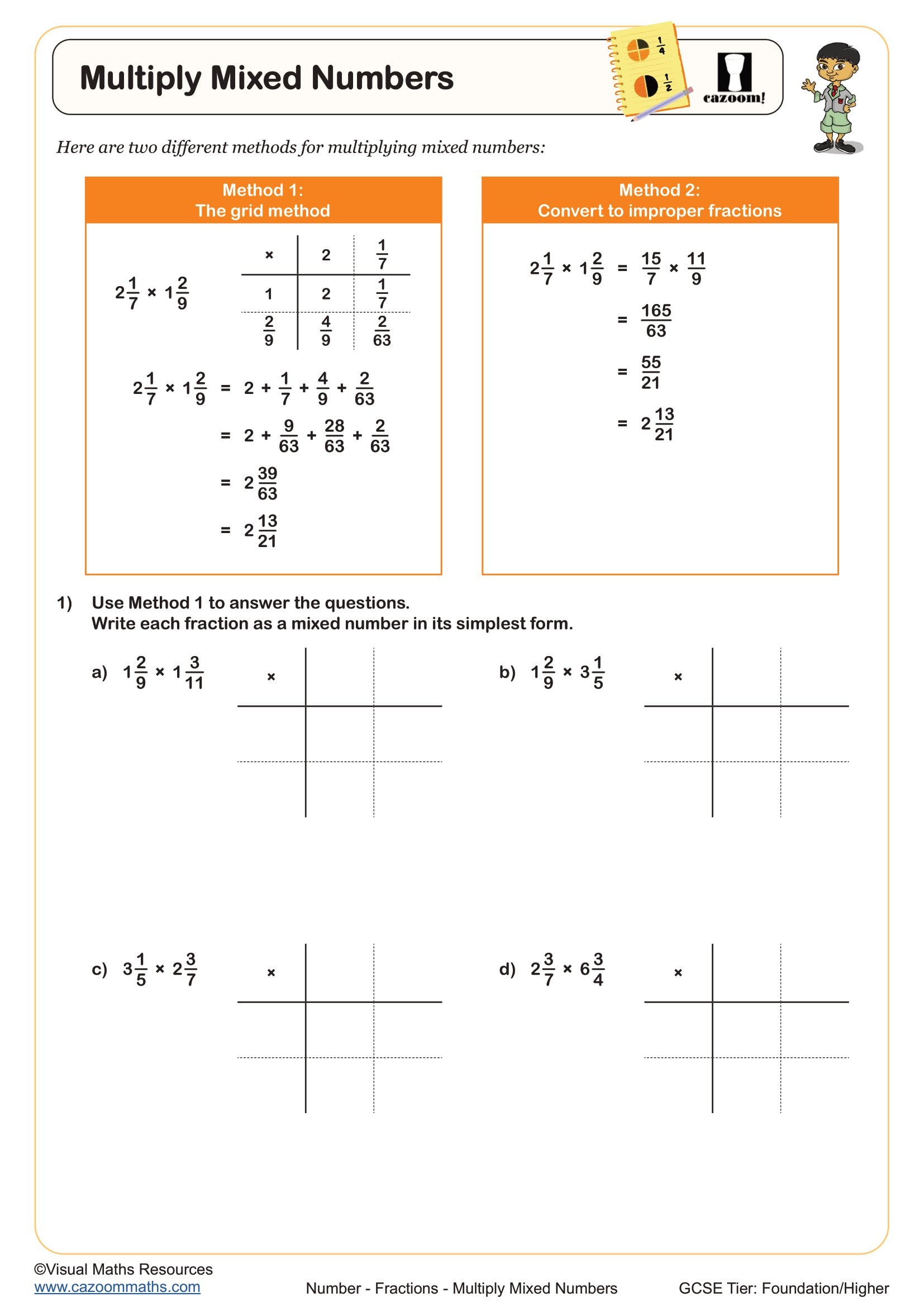
Multiplying and Dividing Fractions
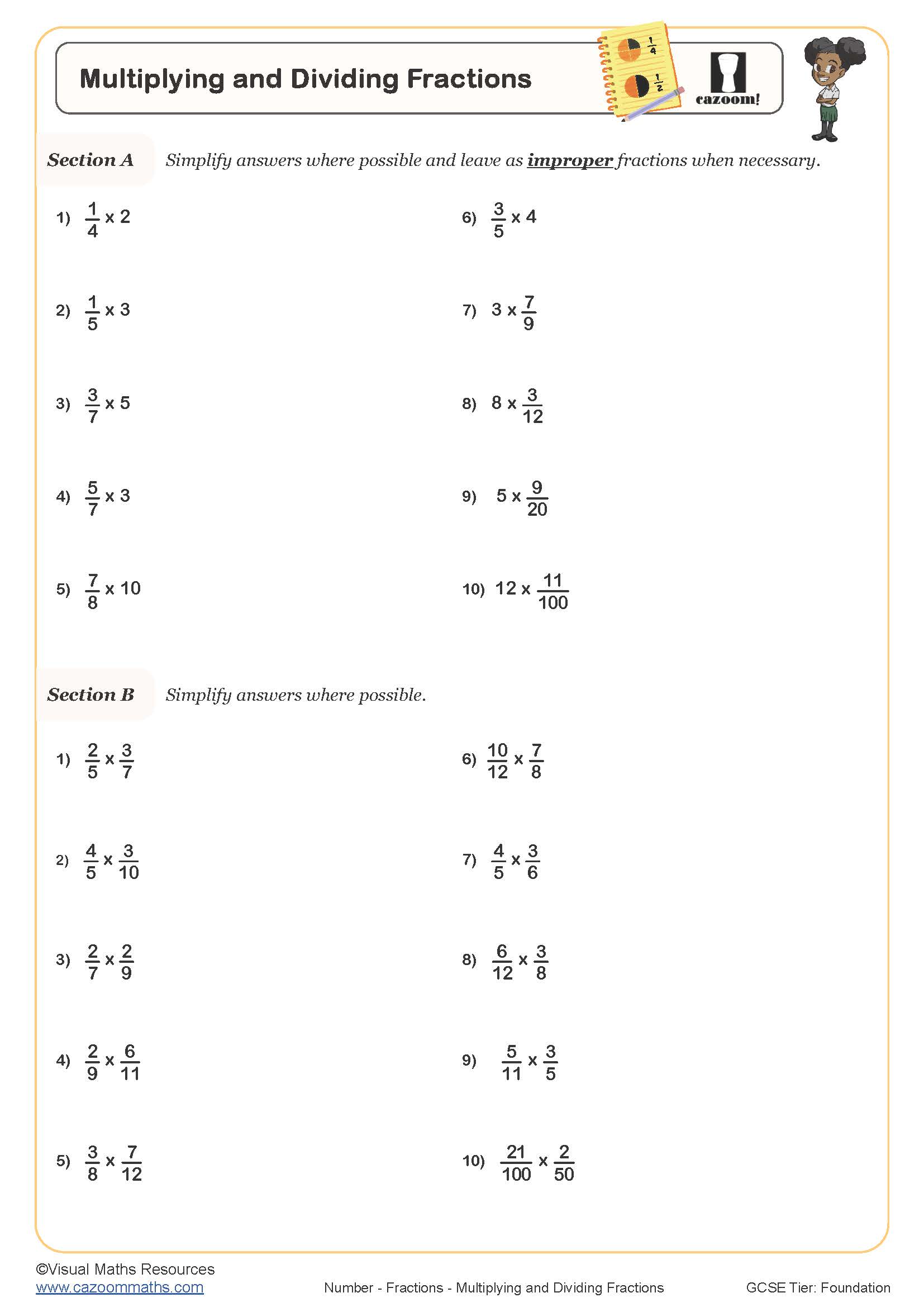
Multiplying Fractions - Using the Area Model
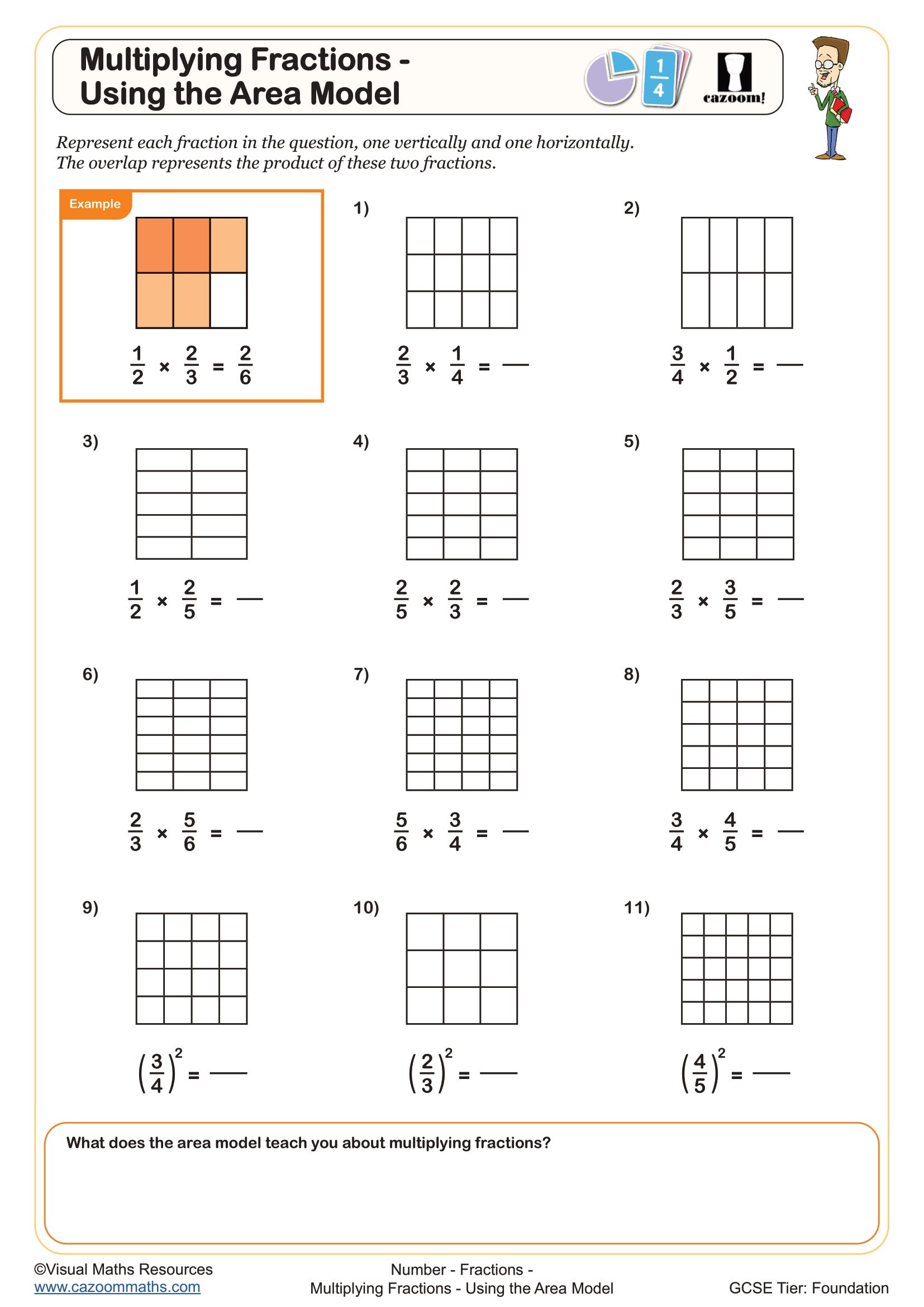
Operating with Fractions (C)
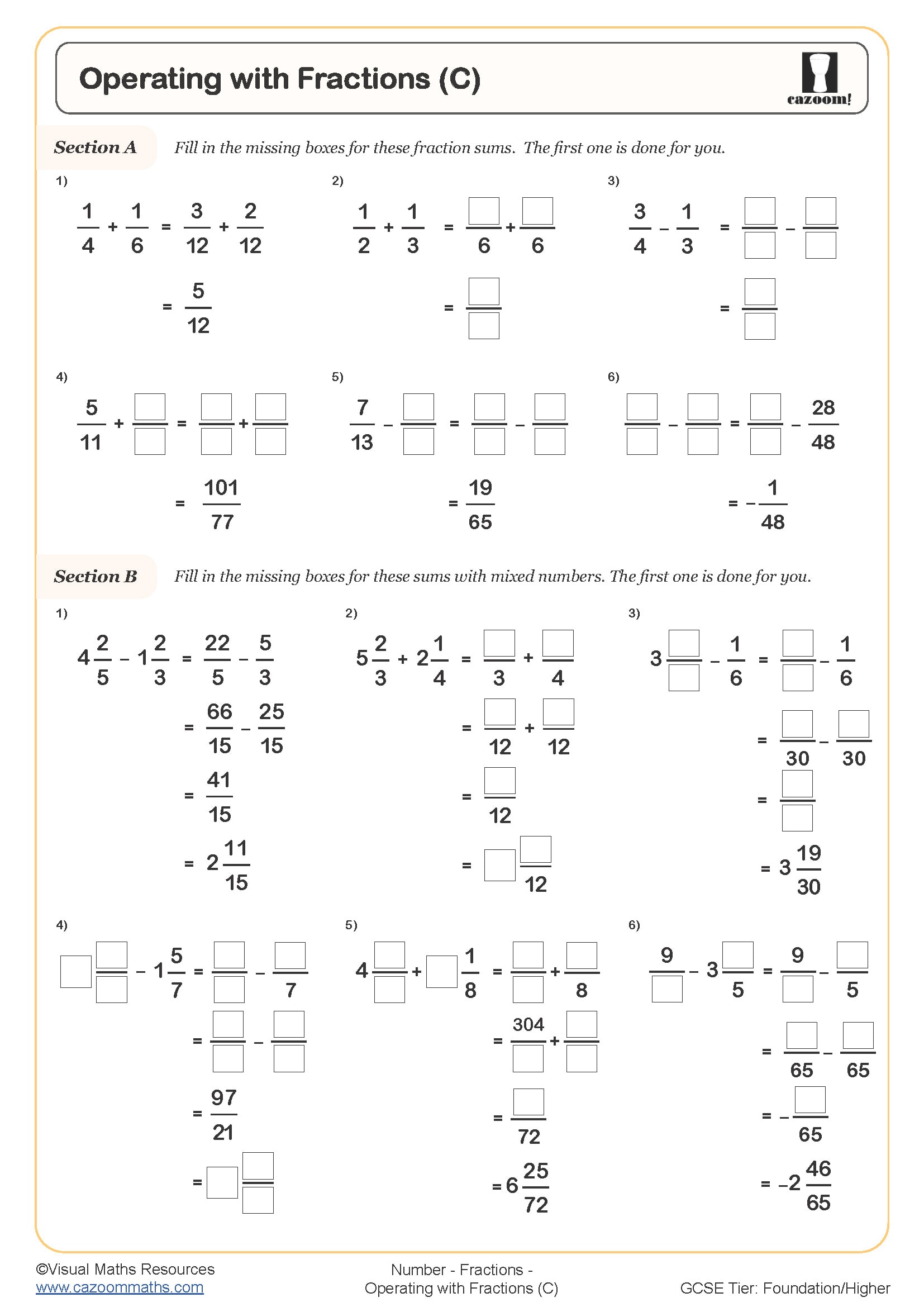
Ordering Fractions
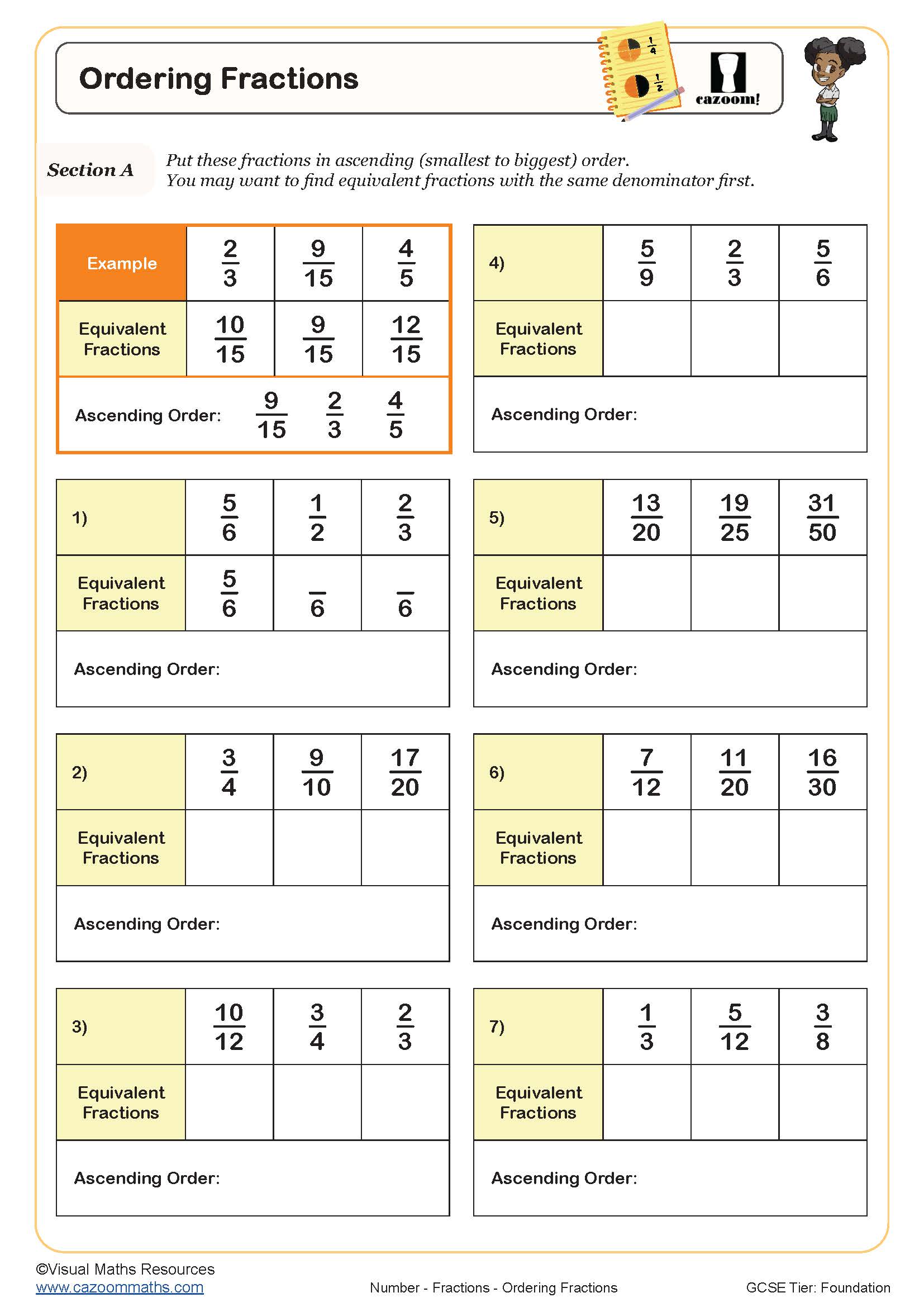
Recurring and Terminating Decimals
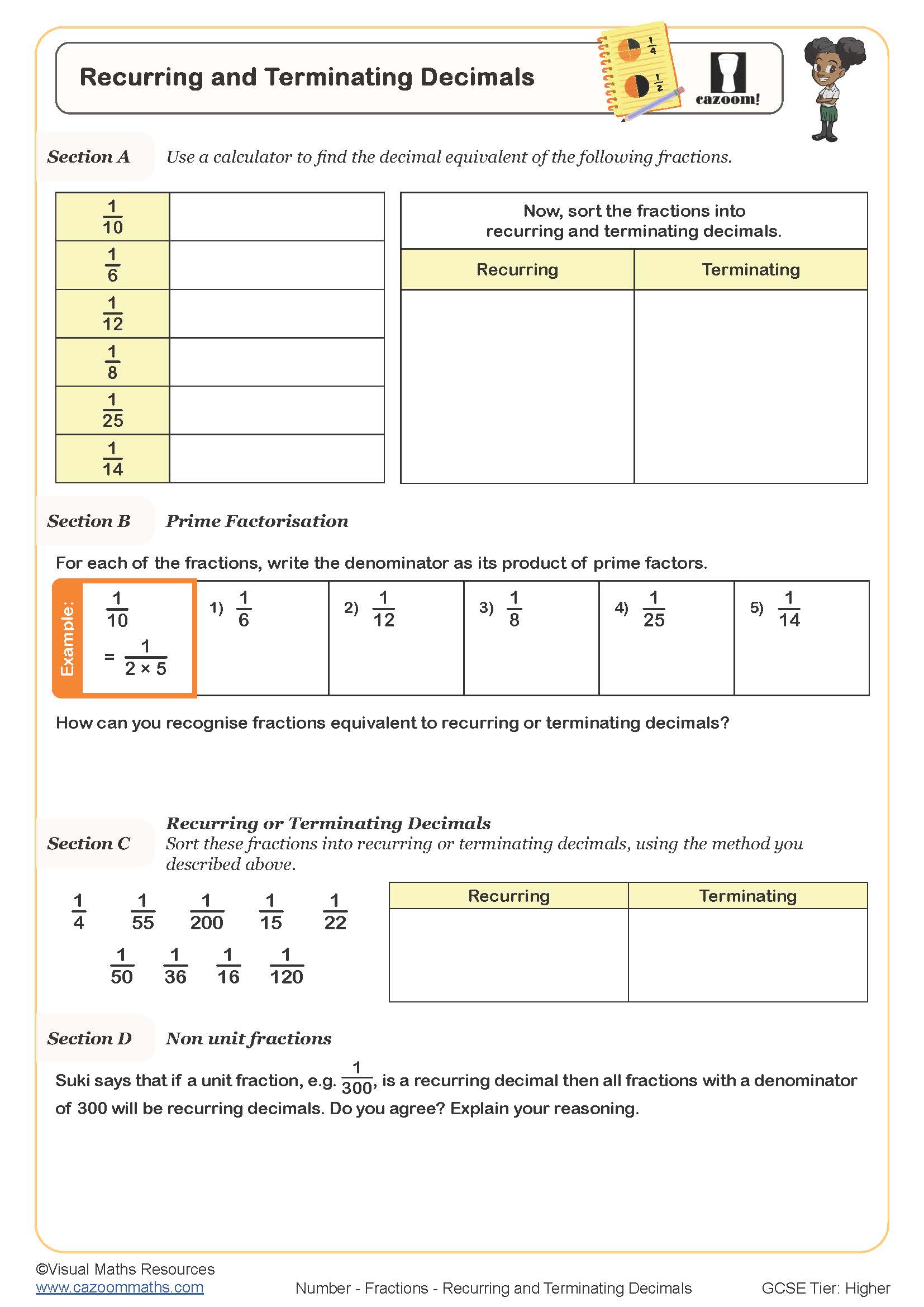
Support Your Child’s Learning With Our PDF Year 9 Fractions Worksheets
Mastering fractions in Year 9 marks a crucial transition where students move beyond mechanical procedures to develop genuine mathematical reasoning. Students who practice with structured worksheets develop their ability to recognise patterns, find efficient calculation methods and solve new problems through organised methods. The teaching approach, which begins with concrete examples and then progresses to pictorial representations before using abstract notation, enables students to build deep conceptual understanding rather than memorise information superficially. The students who use these materials achieve better accuracy in solving multi-step problems, and they become more confident to try difficult questions. The method enables students to manage their math anxiety because it shows them how to solve complex problems by following basic sequential steps.
Specific learning benefits include:
• Strengthens algebraic fraction manipulation
• Develops proportional reasoning skills
• Improves accuracy in multi-step calculations
• Enhances problem-solving strategies
• Reinforces connections between fractions and percentages
• Builds resilience when facing unfamiliar problems
• Creates a foundation for ratio and probability work
Curriculum Coverage: Fraction Topics and Skills You’ll Teach
The carefully sequenced worksheets progress from concrete visual models through pictorial representations to abstract mathematical notation, ensuring students grasp underlying concepts before advancing to complex procedures. Each resource includes comprehensive worked solutions demonstrating efficient calculation methods and alternative approaches where appropriate. Topics span the full Year 9 curriculum requirements, from fundamental ordering tasks to sophisticated problem-solving scenarios involving multiple mathematical concepts.
The worksheets in this collection include:
• Comparing & Ordering Fractions — compare fractions fairly using common denominators and reasoning.
• Fraction Addition & Subtraction — combine like and unlike denominators with efficient methods.
• Fraction Multiplication — multiply fractions accurately, including visual area-model strategies.
• Fraction Division — divide using reciprocals and interpret results sensibly.
• Mixed Numbers Operations — handle whole-and-fraction parts across all four operations.
• Mixed Operations & Fluency Practice — solve multi-step tasks blending operations and representations.
• Fractions, Decimals, Percentages & Ratios — connect forms, conversions, and percentage change in context.
• Fraction Problem Solving — tackle varied real-life word problems with fractions.
• Decimal Forms: Recurring and Terminating — recognise repeating patterns and exact decimal endings.
Why Parents and Teachers Trust Year 9 Fractions Worksheets for Homework Support
Experienced maths educators recognise the importance of well-structured resources that balance procedural fluency with conceptual depth. The worksheets enable teachers to differentiate instruction immediately because they contain questions of varying difficulty levels, which support students of different abilities in the same classroom. Students can work independently through a well-organised layout which follows a logical structure, so teachers can focus on delivering specific help to students who require it. The answer sheets contain full reasoning steps, which enable students and parents to see the mathematical thinking involved. Time-pressed departments appreciate ready-to-use materials that require no additional preparation yet align perfectly with the scheme of work requirements. The process of regular use helps to identify typical mistakes at an early stage, which makes it possible to prevent their development into permanent errors. The consistent design of Cazoom Maths worksheets helps students move between various mathematical subjects because it minimises mental effort during their academic year.
From Cooking to Time Management: Real-World Applications of Year 9 Fraction Understanding
The essential skills of fractions enable people to perform various everyday tasks and professional duties which include recipe ingredient measurement and financial planning. The acquired numerical skills will enable students to handle everyday tasks in their future adult life. For example-
• Recipe adjustment when cooking for different group sizes
• Calculating discounts and sale prices whilst shopping
• The assessment of probability in games together with risk evaluation requires a full understanding of these core principles.
• Measuring materials accurately in design technology projects
• The process of understanding statistical information within geographical and scientific contexts.
• The process of time management through fractional hours requires proper organization.
• The evaluation of nutritional information which appears on food labels.
• The process of budget planning depends on proportional spending categories for its execution.